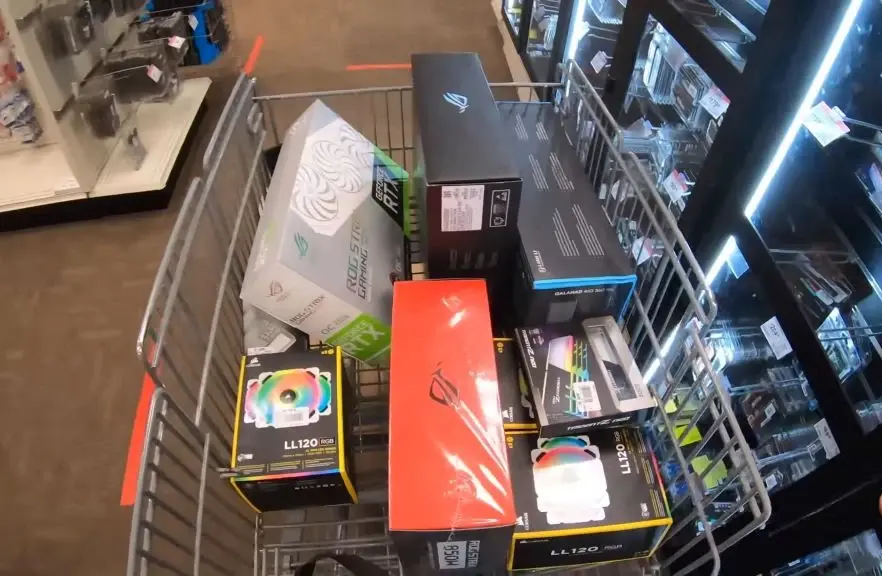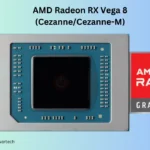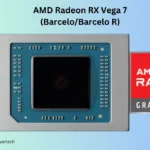Many people look for the answers to questions when they are thinking of building their first Gaming Computer, such as what Computer parts they need and how to pick PC parts to build their gaming computer or normal computer.
I will provide you with all the details and information regarding this issue which sometimes becomes a headache for people about how to pick PC parts and where to choose from.
I will answer all that I have learned all these years. I have also faced these issues while building my first Gaming Computer and tried to find the solutions on the internet.
I will share what I found and share with you here in this article. So, let’s begin.
Parts needed to build a Gaming PC
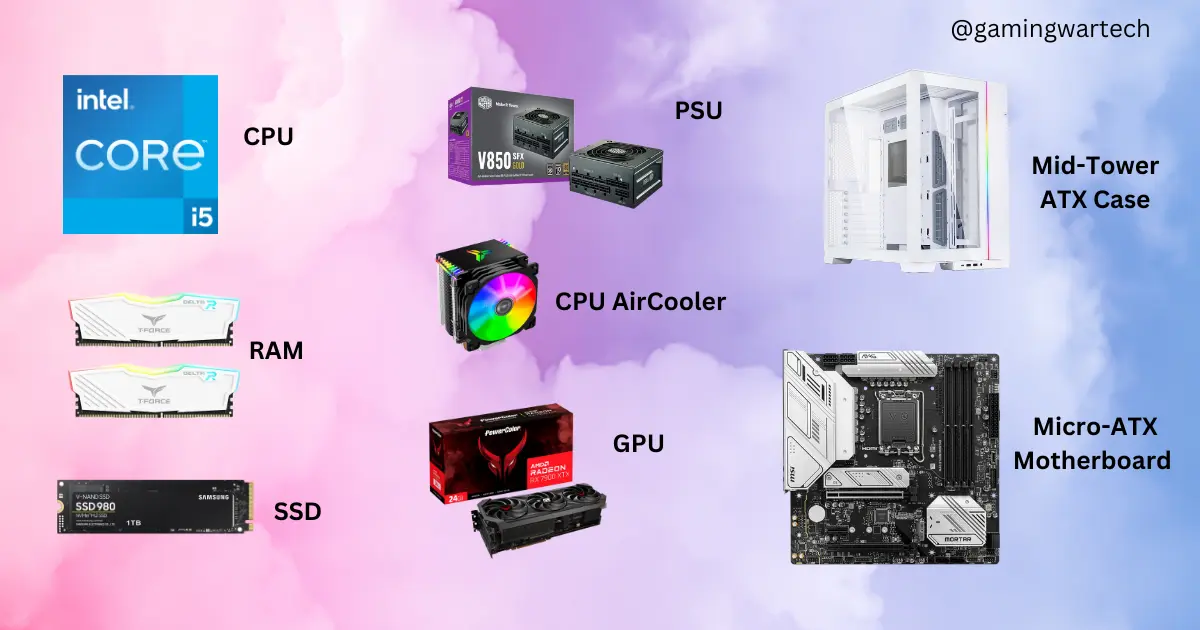
As the heading suggests, I am going to tell you about the basic parts you need to build your gaming PC. These are the basic parts you need:
- CPU
- Motherboard
- RAM
- GPU
- PSU
- CPU cooler
- Storage device
- PC Case
How to Pick PC Parts?
This is the portion where every beginner gets stuck on how to pick PC parts, which one among these will be best for me? , and what to look for to pick the suitable PC parts that can give me the best performance for the right buck.
Things to consider while picking PC parts are What do you need your PC for? I will be explaining by considering an example of a gaming PC but choosing PC parts for other purposes like basic work and professional work will be very similar.
Once you decide your purpose for building a PC, you have to set a budget to get the right PC parts for your PC that fulfill your purpose. Ask yourself, What is your budget? How much does your pocket allow you to spend on your PC?
After figuring out all these, Here comes the tricky part How to pick PC parts and where to choose from. I will be explaining the step-by-step process.
What do you need your PC for?
When building a PC everyone must have thought of, what purpose they need a PC for. My purpose was to Play PC games, do some coding, video, and photo editing, entertainment, and run some professional work software.
Your purpose may be similar or different but the intent remains the same which is you need a PC.
What is your budget?
Now that you have decided your purpose for building a PC it is time to set a budget. Picking the right parts to build a PC from which you can get the most performance under your budget is a peaceful and joyous feeling.
In terms of building a gaming PC, deciding what type of gaming performance you want from your PC under the budget is essential.
There are 3 resolutions that people like to game on, 1080p, 1440p, and 4K. Some people like to play games at a higher refresh rate as well.
So setting a budget according to your requirements and what your wallet allows is debatable but necessary. You can buy PC parts for playing games at 1080p 60fps high settings around $600 or INR 50,000.
If you raise your budget to $800 or INR 60, 000 you can play games at a higher refresh rate at 1080p, but if you’re focusing on 2K or 4K level gaming your budget should be between $1000 – $3000 or 80K – 2.4 Lakhs INR.
Some elite gamers always want the best of the best. For them, budget is not the issue. They are gaming enthusiasts.
There are categories of Gaming PCs, including Entry-level Gaming PCs which come under the budget of $600 or 50K INR, Mid-Tier Gaming PCs which have a budget segment of $800 – $1500 (60K – 120K INR), High-End Gaming PCs have a budget of $1500 – $3000 (1.2 Lakhs – 2.4 Lakhs INR), and Enthusiast level Gaming PCs cost more than $3000 or 2.4 Lakhs.
Playing Esports titles like CSGO, PUBG, Doom Eternal, Overwatch, etc. You don’t need High-end Gaming PCs to play these games at 1080p High refresh rates.
AAA title games are a bit Graphics power-hungry, To enjoy these games at High/Ultra settings @1440p @60 fps or more and 4K High settings at 60fps you need High-End Gaming PCs.
To experience these AAA games at High frame rates on a 4K Monitor you have to invest in Enthusiast level gaming PCs. Since 2020, games like Cyberpunk 2077, Hogwarts Legacy, Starfield, etc. have very high system requirements to play at optimal frame rates.
Many PC gamers want their Gaming PC to be future-proof, which means your current PC should be able to play games that will be released soon at High settings in their favorite resolution.
Since 2020 there have been games that are taxing for gaming PCs and demand more GPU memory to run but due to technologies like DLSS, FSR, and XESS, it becomes easier to play games at High resolution with more FPS even if you have a system doesn’t meet the game requirements. Though here and there you have to compromise some settings.
Setting a budget for How to pick PC parts is the most important part.
Picking PC parts
Deciding and setting a budget, Now it’s time to pick the right PC parts according to your budget is important because you don’t want to pick a part that will perform below your expectations and will become a costly mistake.
The first thing you should remember while picking PC parts is Which brand it is, whether will it last long enough, and Whether it fits your budget. Each part has a way to analyze and compare them with others so you can choose the right one.
I have explained How to pick PC parts below and their order to buy PC parts.
Where to choose your PC parts?
Now in terms of buying your PC parts where you can find the best deal will be the best but you also have to be careful about who the seller is.
When buying from E-commerce sites check the Certified Seller badge of the sellers and their reviews, because in recent years you must have heard how the sellers on E-commerce shops have committed fraud.
You should buy from trusted sellers only for example Amazon-verified sellers, and Flipkart-verified sellers, and there are other trusted online stores or you can visit your nearby local stores.
According to me, In India Amazon is the best in terms of buying PC parts or any other electronics because I have ordered PC parts from Amazon. Always compare the prices between the stores and then decide to buy the product.
In India, 2 Big E-commerce sites sell these products Amazon and Flipkart while some online stores especially sell PC and PC-related stuff.
In the USA, there are many big E-commerce sites to choose your PC parts from Amazon, Best Buy, Newegg, and Microcentre which also have physical stores all around the USA.
In what order should I buy PC parts?
Buying all the PC parts simultaneously is a good idea but most people can’t afford it. So they chose to buy part by part when I was building my first gaming PC, I bought them one after another.
Though I didn’t buy them in order, I just bought them by comparing prices among the parts and ordered the cheap ones first. Now I know that there is an order about how you should buy PC parts and I am telling you here.
The order you should buy your Gaming PC parts are:
- CPU
- Motherboard
- CPU Cooler
- GPU
- PSU
- RAM
- Storage
- Case
Though the order doesn’t matter, keeping things in order makes it easy to put them. I’ve always preferred performance more than looks. If you’re a little short on budget just focus on performance first.
Don’t compromise with the CPU and GPU these are the performance components of your PC and yes, don’t shy about getting a good-grade PSU with enough wattage to handle your entire PC.
I haven’t included the accessories in the list though after ordering all the essential parts, buy the Monitor, Gaming mouse, and Keyboard.
How to choose a CPU?
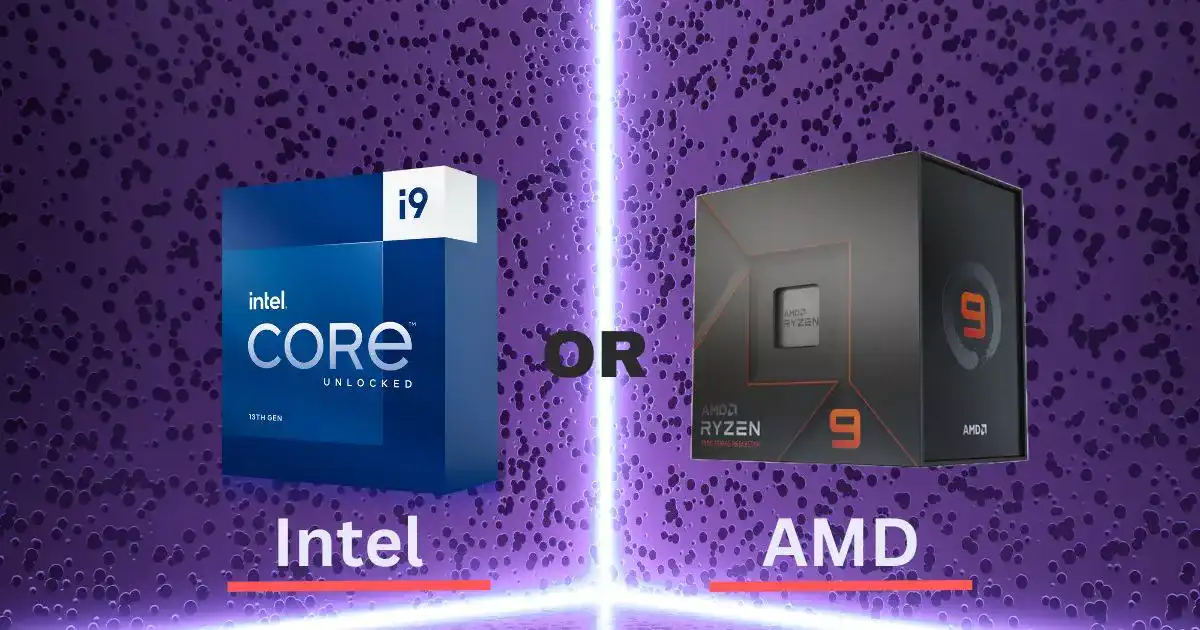
Here comes How to pick PC parts, first the CPU is the deciding factor. Which CPU-based PC do you want to build whether Intel or AMD, there are only two CPU brands for now and both have their perks. CPUs are also called Processors.
Picking the right CPU depends on what type of PC you want to build whether it is lightweight tasks, balanced of all, or high CPU-intensive tasks. It all comes down to your budget.
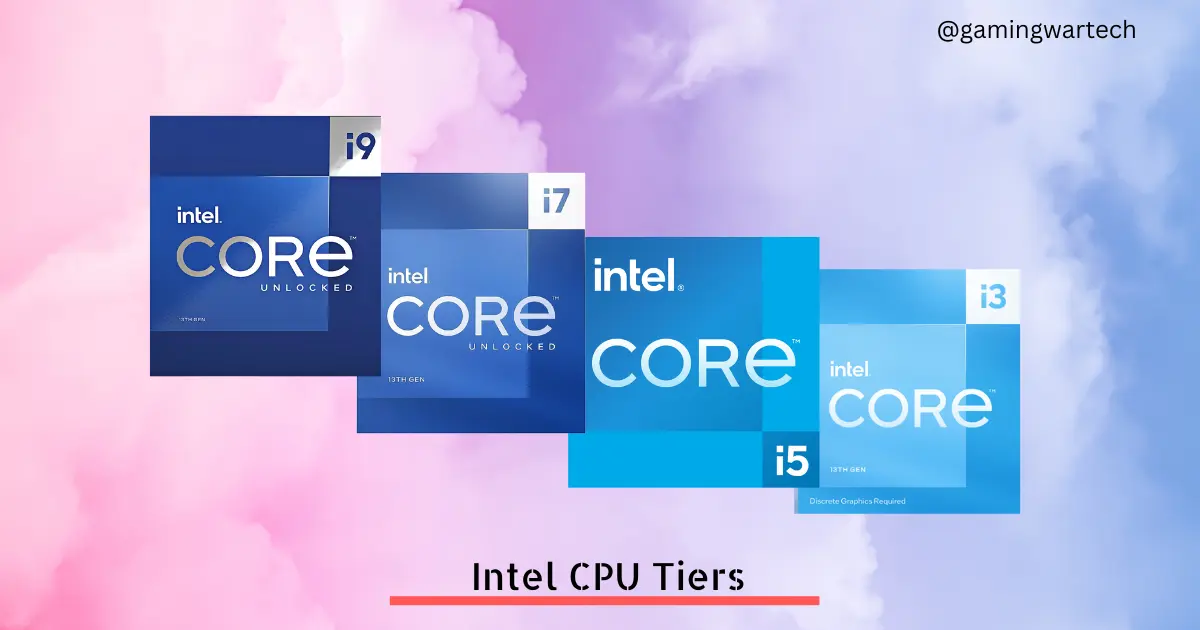
Intel has CPU Tiers, and so does AMD, Intel comes with i3, i5, i7, and i9 with many different variants with suffixes like K, S, F, and T.

The “K” suffix offers higher clock speeds, and higher TDP, and supports manual overclocking compared to their non-K counterparts which do not support overclocking (e.g. – i9 13900K, i9 13900).
The “S” suffix is added with the ‘K’ suffix in the CPU name, offers the highest clock speeds, and highest TDP, and is only available with Intel’s top-notch lineup i9 (e.g.- i9 13900KS).
The suffix “F” means that the i-GPU is disabled on the CPU. So you need a discrete GPU to operate your PC, especially gaming and video editing PCs and these CPUs are a bit cheaper than their non-F counterparts (E.g. i9 13900 KF, i9 13900F).
The suffix “T” processors are the cut-down version of no suffix counterparts with lower clock speeds and TDP hence the performance is reduced.
Intel CPUs with the suffix “K” don’t come with CPU cooling fans.

AMD CPU tiers are Ryzen 3, Ryzen 5, Ryzen 7, and Ryzen 9 with various versions. AMD also uses suffixes like “X, X3D, and G” with the suffix “X” being the best with a higher boost clock and TDP, which means more performance than their non-X counterpart.
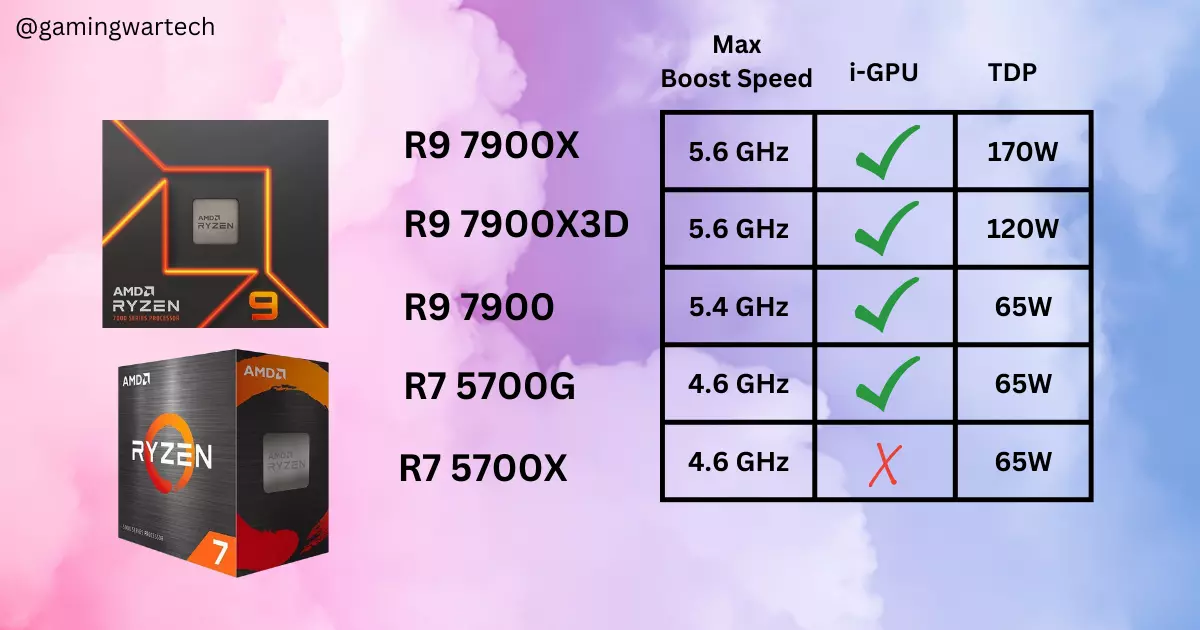
Previously till the Ryzen 5000 series both X and non-X counterparts didn’t have i-GPUs but in the latest 7000 series all the AMD CPU variants have i-GPUs but are very weak for any graphical workloads.
All the latest 7000 series AMD CPUs with the suffix “X” in their name aren’t included with cooling fans but you will find cooling fans on previous generations of Ryzen 3000, and 5000 CPUs with the suffix “X” till Ryzen 5.
AMD CPUs with the suffix “X3D” were made especially for gaming with higher clocks, TDP so you will see an average performance in productivity workloads that’s the cost for high-performing gaming processors.
The “G” suffix lineup comes with i-GPU also known as Accelerated Processing Unit or in short APU. The differences are when we compare them with their non-X and X counterparts. Their performance is a bit low and has a lower TDP but with higher graphical performance.
These processors with “G” in their name can trade blows with entry-level GPUs and a good-budget CPU for gamers who want to build a gaming PC without a GPU.
For Entry-level Gaming Ryzen 3, Ryzen 5, Intel i3, and Intel i5 CPUs are best for the budget. For Mid-tier Gaming Ryzen 5, Ryzen 7, and Intel i5 are best, for High-End Gaming Ryzen 7, and Intel i7 are best and for Enthusiast-level Gaming Ryzen 9, and Intel i9 are the top dog processors.
Photo/Video editing PCs prefer more CPU cores with greater single-core as well as multicore performance while a Gaming PC’s bare minimum requirement is 4 cores, having 6-core and 8-core CPUs is the sweet spot with high Instruction per cycle (IPC) and single-core performance.
The difference between these CPU tiers is the core count, cache, clock speed, and TDP. So when choosing the CPU you have to look for all these aspects and check reviews, comparisons, and benchmarks to pick up the best CPU in your budget.
This is the most basic guide on How to choose a CPU for your PC and also the main component on How to Pick PC parts.
How to choose Cooling systems?
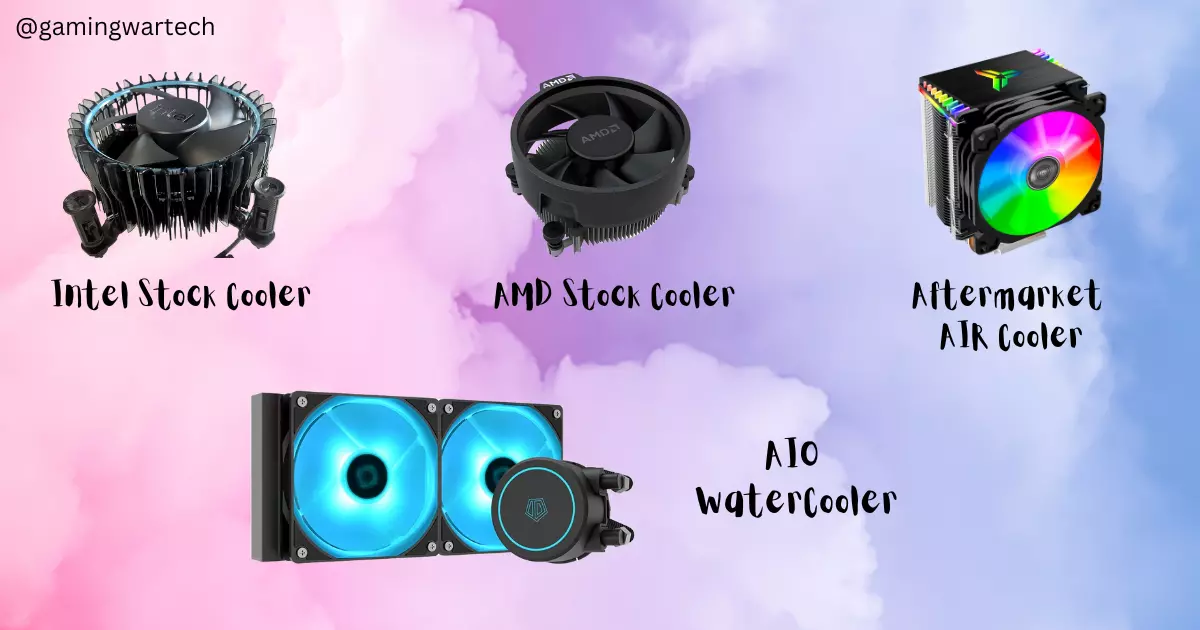
On How to pick PC parts, the next part is Cooling systems as all the systems which consume power generate heat so you need a cooling solution to handle that problem.
So first you have to know what type of cooling systems are available for PC. The basic is a CPU Air Cooler which cools your CPU while intake fans and exhaust fans are included in PC cases. You can also buy them separately.
These intake and exhaust fans come in various sizes 90mm, 120mm, 140mm, and 200mm. Some come with RGB and some don’t, choose them according to the compatibility and look of your case.
The advanced cooler is an AIO watercooler that comes with a radiator with fans of various sizes and numbers, with a single fan (120mm & 140mm), double fans (240mm & 280mm), and triple fans (360mm). People also prefer custom loop coolers but these are very expensive.
The main components that need cooling are your CPU and GPU although GPUs come with a cooling system that doesn’t need any extra cooler, some High-End PCs use a custom water cooler as well.
As I have explained in the How to Choose a CPU section Some lineups of CPUs both Intel and AMD come with stock coolers.
You can use them for cooling though stock coolers are not the viable choice for cooling your CPUs, especially when gaming, video editing, or other CPU-intensive tasks.
However, you can go with AMD stock coolers which are better than Intel stock coolers. If you’re on a low budget you can save some money on this part by choosing a stock cooler. AMD stock coolers can be used for gaming, basic video editing, and CPU workflows as well.
If you are using your PC for intense Gaming, video editing, and other CPU-heavy workflows you should buy an aftermarket Air cooler or AIO watercooler for better cooling which will maintain your system temperature at a minimum and provide you with better performance.
These aftermarket air coolers come with a large heatsink and some provide comparable cooling performance to AIO watercoolers. Picking from the best brand is always recommended.
Choose them according to your CPU brands and CPU socket as both Intel and AMD have different CPU cooler brackets. It is also recommended to check their reviews and cooling performance before choosing your Air coolers or AIO watercoolers.
How to Pick a Motherboard for Your Gaming Computer?
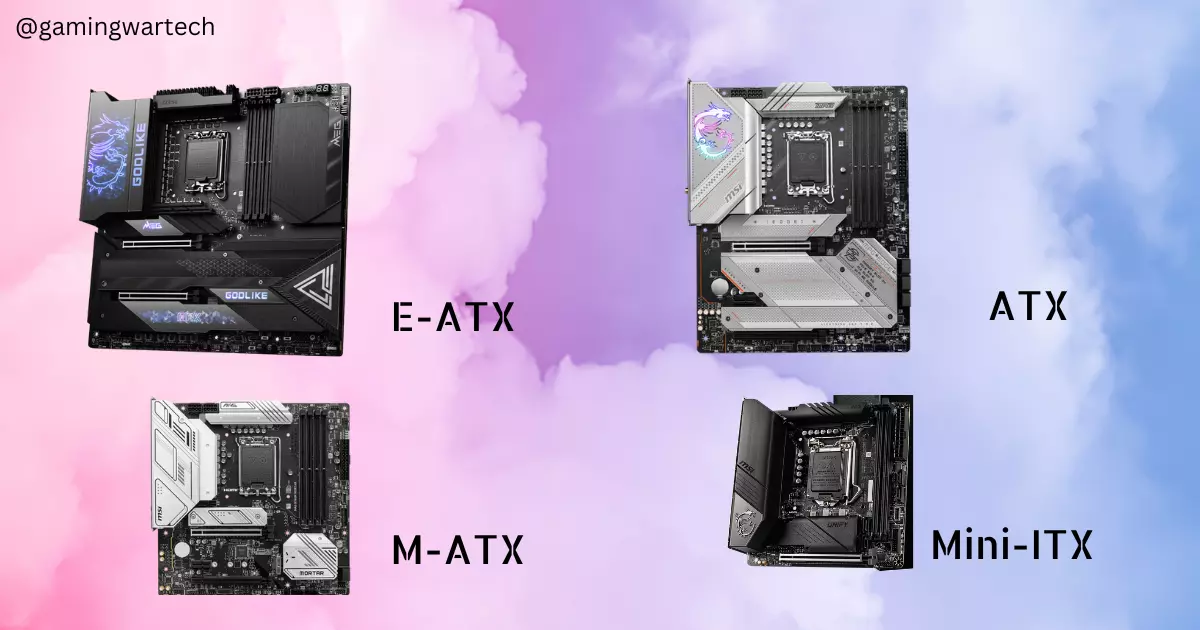
On How to Pick PC Parts, The next part that comes in line is how to pick a motherboard. The motherboard comes in different sizes E-ATX, ATX, micro-ATX, and mini-ITX.
E-ATX are a bit larger than ATX motherboards, have many slots and features, and fit into mid-tower and full-size PC cases. ATX is a bit smaller, with fewer slots and features than E-ATX.
Micro-ATX is small in size and a little bit cheaper than ATX with few slots and can easily fit into smaller mid-tower chassis as well as on larger chassis.
Mini-ITX is the smallest of them in size with only 1 PCIe x16 slot for GPU or expansion slot and 2 RAM slots. They can fit into any size of a PC case.
Picking a motherboard depends on what CPU brands your PC will be based on. Both Intel and AMD use different CPU sockets. Intel uses LGA 1700 old sockets are LGA 1200, 1151, and 1150, while AMD uses AM5 and AM4 sockets.

Intel 12th & 13th gen uses LGA 1700, 10th & 11th gen uses LGA 1200, 6th to 9th gen uses LGA 1151, while AMD 7000 series uses AM5 and 1000 till 5000 series uses AM4.
Both brands have different versions of motherboards with each having a lineup of enthusiast to entry-level. Intel uses Z, H, and B prefixes in the motherboard name while AMD uses X, B, and A prefixes.
Intel chipsets take names like Z790, H770, B760, and H610 while AMD uses X670, B650, A620 for AM5 CPUs, and AM4 cpus are supported by 300 to 500 series motherboards.
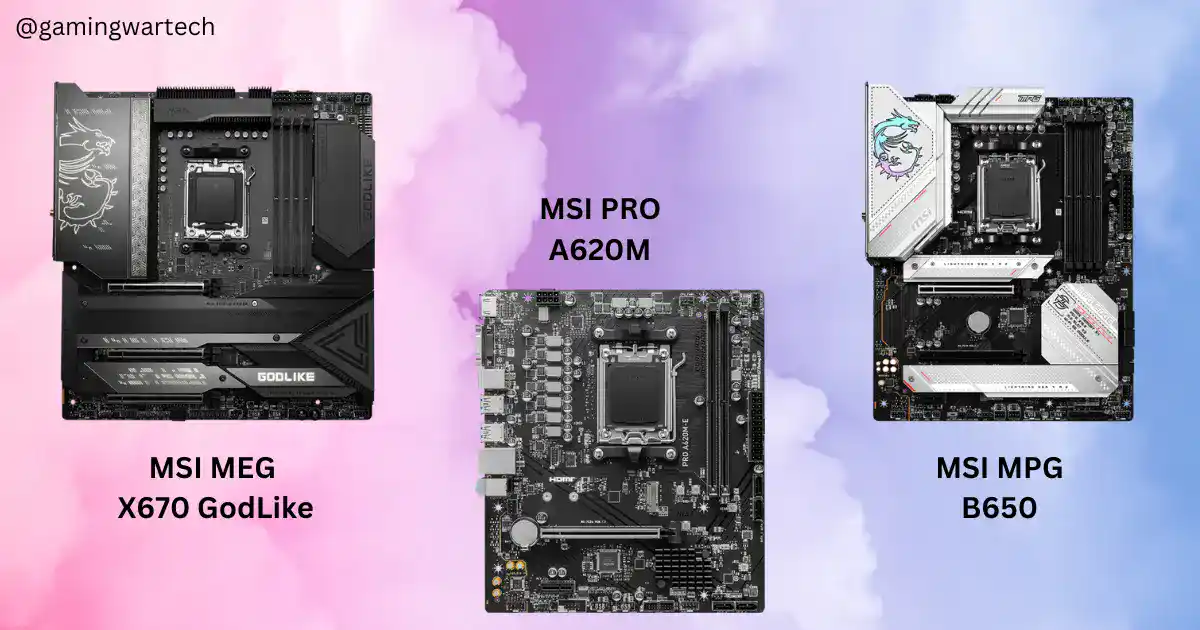
Enthusiasts’ level is Z and X prefix lineups, with High-End level being H770, H670, B650, B550, Mid-range being B760, B650, B550, and Entry-level being H610, A620, A520.
It all comes down to preference and your budget which one are you going to choose? AMD supports overclocking in all lineups except with the A lineup while Intel on Z, H_70, and B except H_10 ones.
The higher the cost of a motherboard the better quality and durability it has, and will be packed with more premium features and have more slots. The most-named Motherboard brands are MSI, Gigabyte, ASUS, ASRock, and Evga.
After the CPU, the Motherboard is one of the essential components on how to Pick PC parts so be very careful about picking the right motherboard based on the CPU socket.
How to Choose a Graphics Card?
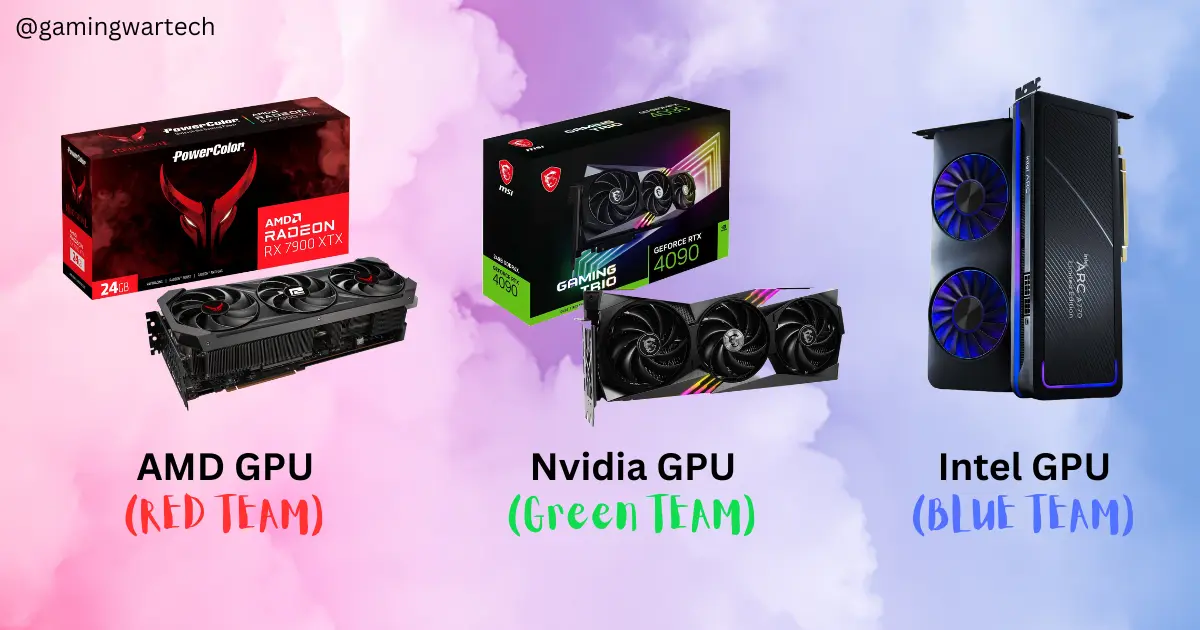
On How to Pick PC parts, the most expensive of all parts is your Graphics card so choosing it carefully is a must especially if you’re going to build a PC for Gaming, Video Editing, 3D rendering, and other graphical intensive tasks.
If you’re on a tight budget and can’t afford a discrete GPU you can go with AMD APUs their integrated graphics are comparable with Entry-level graphics cards like RX550, RX560, GTX 1050, 750Ti, etc., and offer you a good 1080p gaming experience in e-sport games and older games like GTA V, NFS, COD, etc.
If you’re building a basic work PC you don’t need a discrete Graphics card, choose any CPU with an i-GPU and it will work fine.
There are now 3 GPU brands AMD, Nvidia, and Intel, among the three AMD and Nvidia have a history in the Gaming industry and have come a long way in competing with each other but Nvidia has always taken a top spot.
Now what to look for in a Graphics card is the VRAM, Clock speed, GPU core count, Power it requires, and how it performs in that particular budget segment. Both AMD and Nvidia target all the budget segments from Entry-level to Enthusiasts level while Intel focuses on Entry-level to Mid-range level.
Entry-level GPUs by AMD, Intel, and Nvidia target 1080p 30fps+ gaming on low, mid, and high settings. They have a VRAM or graphics memory of 2GB and 4GB for e-sports games and older games, depending upon the optimization of those games are sufficient.
4GB for 1080p gaming is the bare minimum if you don’t play AAA titles which are heavily VRAM-demanded games but 6 GB is the sweet spot for playing games at High frame rates.
Mid-range GPUs by AMD, Nvidia, and Intel target 1080p High/Ultra settings for most games and 1440p mid-high settings for some games with VRAM of 6GB as a bare minimum and 8GB being the sweet spot. You will be able to play games at high frame rates at 1080p and 30+ fps at 1440p.
High-end GPUs by AMD and Nvidia target 1440p High/Ultra settings on most games and 4K mid-high settings for some games with VRAM of 8GB as a bare minimum with 10GB and 12GB remaining the sweet spot. You will get 100+ fps at 1440p on most of the games.
Enthusiasts level GPUs by AMD and Nvidia target 4K High/Ultra settings on all games at High frame rates except some of the latest AAA games released in 2022 and above. For 4K, 12GB VRAM is the bare minimum and 16GB is the sweet spot with some latest generation cards having 20GB and 24GB VRAM.
You should remember that with each generation the performance of graphic cards gets uplifted plus the games are becoming more and more demanding as well. so don’t just look at the VRAM, Check the Core count, Architecture, and Generation as well.
All the above information was based on Rasterization or should I say pure raw rendering ability of a GPU. That changes with the Ray Tracing feature, only High End and Enthusiasts level cards of AMD and Nvidia are capable of playing games by enabling the Ray Tracing feature.
If you want the best Ray Tracing performance in your games your pick should be the Nvidia as their Ray Tracing capable cards are the top dop though you will see a drop in performance in games.
To play games while turning on Ray Tracing will require more VRAM means adding 2GB to 3GB of extra VRAM on each Native resolution on top of Rasterization performance. If your in-game usage is 6GB VRAM you need 6GB + 2GB extra to run with Ray Tracing High settings on 1080p.
Now with Nvidia, AMD, and Intel supersampling technology like Deep Learning Supersampling (DLSS), FidelityFX Super Resolution (FSR), and Intel’s XE Supersampling (XESS), which can increase your gaming experience by letting you play games at Higher frame rates even with low-end cards.
You need a high refresh rate monitor to see all those extra frames and a Power supply to handle your GPU. Remember to always check Reviews and Benchmarks before buying it.
For Gaming and GPU-intensive tasks, Your GPU is the most expensive and essential part in How to pick PC parts.
There are a bunch of GPU board partners out there, all offering their cheapest to most expensive GPU of the same lineup with the difference being in their cooling systems.
How to Pick a Power Supply for a PC?

Another important part of How to Pick PC parts is the power supply that provides electricity to every component in the PC.
Picking the correct power supply will protect your PC components against the power surge and provide the right amount of power to all the parts as well.
For standard work PCs that do not need any discrete GPU, 300 – 400 watts is more than enough but for Gaming, Video Editing, or any High-End workstation PCs you need a lot more.
For Entry-Level Gaming PC, 450 – 550 watts power supply is sufficient but if you want a little more futureproofing 650 watts will be okay.
For Mid-Range Gaming PC, a 550 – 750 watts power supply will be sufficient with futureproofing in mind you can look for 850 watts PSU.
High-end gaming PCs require a minimum of 750 – 850 watts with futureproofing to 1000 Watts. Enthusiasts level Gaming PCs with a minimum of 850 – 1000 watts with thinking of any future upgrade to 1200 watts will do fine.
Remember to pick your PSU from reputable brands that provide you with an 80-plus certified rating. The 80 plus certification is the standard for buying a PSU which means the PSU will provide at least 80% efficiency with 20% power loss in the form of heat.
The 80 plus standard PSUs are also called 80 plus white which is the cheapest among others. There is a hierarchy of PSUs with 80 plus ratings and those are 80 plus White, Silver, Gold, Platinum, and Titanium with each increase in ratings, prices of your PSUs also increase with Titanium being the most expensive one.
As the ratings increase, the efficiency of the PSUs also increases by 2 – 3% with Titanium being the most efficient one and white being the least. Power supply is also known as Power Supply Unit (PSU).
PSU comes in three modes Non-Modular, Semi-Modular, and Fully Modular. Non-modular has all the cables fixed with the PSU, Semi-Modular has only the main power cables fixed while others can be removed, and Fully Modular means all the cables from the PSU can be removed.
When looking for a PSU, you should check for brand reputation, and an 80 plus rating, do not buy over-wattage PSU for your PC, check the power usage of your PC components, and always buy PSUs 100 watts higher than your total wattage consumed and pick the right wattage PSU.
At the beginning, the power supply doesn’t seem much but this is one of the most important components in How to Pick PC parts because the right amount of power supplied to your PC keeps your component healthy and will last longer.
How to Choose RAM Sticks?

Choosing RAM is another key component in How to pick PC parts, RAM or Random Access Memory is a volatile memory that is a bridge between your CPU and storage devices. It keeps data available when your CPU needs to run any application.
The more RAM or system memory you have the better the performance of your PC will be. For standard work PCs, 8GB is more than enough. If you do Gaming, Video Editing, Graphic designing, or a Developer you need more RAM.
Entry-level Gaming PCs require a bare minimum of 8GB RAM if you are running older games and esports games with normal browsing and other kinds of stuff.
Mid-Range Gaming PC requires 16GB RAM which is the sweet spot in 2024 due to games being memory hungry plus you don’t just game on your PC but run other software as well.
High-end gaming PCs require a bare minimum of 16GB, but if you opt for 32GB, it will be futureproofing your PC. You will also be able to Video/Photo editing at 4K.
Enthusiast-level Gaming PCs require 32GB which is more than enough for anyone, but if you can extend it to 64GB, it will be overkill but will be worth it, especially for video editors, and graphic designers working at higher resolution.
What do you have to look for in RAM? The first thing is generation that is, DDR4 or DDR5 which of these is supportable for your PC and it depends on your CPU and motherboard. AMD 7000 series CPUs and motherboards only support DDR5 while Intel 12th & 13th gen CPUs and motherboards support both DDR4 and DDR5.
The capacity of RAM depends on you as you know better for what purpose you are going to build your PC. The other thing that matters is your RAM speed E.g. 8GB DDR4 3200MHz, the term 3200MHz or MT/S is your RAM speed also read as MegaTransfer per second.
AMD and Intel both prefer faster RAM, The faster the RAM will be, the better your performance will be. If you are using AMD APUs, faster RAM will improve your performance.
It is always preferable to use your RAM in dual channels, using 2 RAM sticks instead of a single RAM stick for better performance in games as well as productive workflows.
Always buy or upgrade your RAM with similar RAM speed otherwise, you will see a drop in performance. Keep these things in mind while buying RAM sticks. Picking RAM sticks is a critical part of How to pick PC parts.
How to Choose Storage?
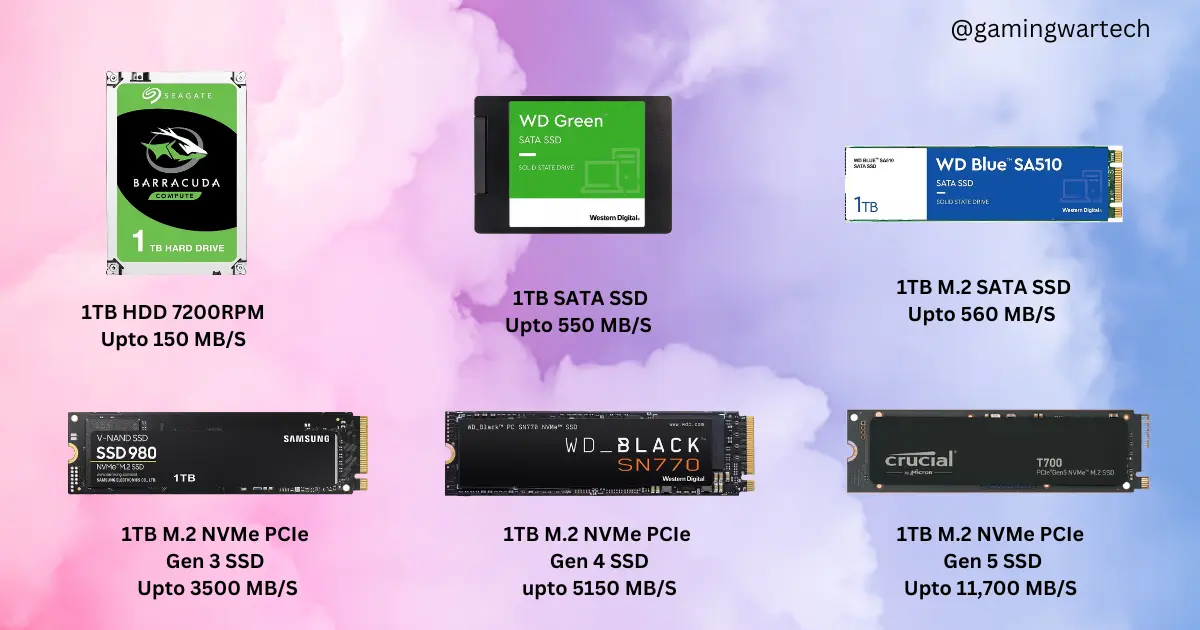
The second last piece on the list of How to pick PC parts is Choosing the storage. You need your OS, games, and other files to be stored on something, right so here comes the storage device or secondary memory.
There are various storage devices for your PC which are HDD, SATA SSD, M.2 NVME SSD, and M.2 SATA SSD.
Now the question is which one should you choose and How much capacity is enough? The PC community and I prefer SSD which is 5 – 35 times faster than your HDD.
HDD stands for Hard Disk Drive, and SSD stands for Solid State Drive. You should use your SSD as the boot drive, which means installing OS as well as applications for faster loading time. and use HDD for storing larger files like games, movies, etc.
Among the SSDs which one should you choose? M.2 NVME is preferable which is expensive but if you can’t afford that M.2 SATA or SATA SSD can be used.
NVMe SSDs are the fastest among them with transfer speeds of up to 11 GB/S. It comes in generations like Gen 3 and Gen 4 with the latest being Gen 5, and with every generation transfer speed increases.
M.2 SATA and SATA SSD provide similar speeds of 550 MB/S Read and 500 MB/s write speed. The only difference between them is communication protocol. Choosing the right storage drive is an important part of How to pick PC parts.
If you’re on a low budget and can’t buy both SSD and HDD, pick 500/512GB SATA SSDs which is a lot cheaper and later you can add 1TB HDD but if you can invest a little more, you can go with a combo of 256GB/500GB/512GB/1TB SATA or NVMe SSD and 1TB/2TB HDD. High-end and Enthusiast PC users prefer NVMe SSDs.
It depends on what type of games you play, and the software you use. Nowadays games require almost 200GB of space.
So the more the storage space, the better. Some reputable brands that sell SSD/HDD are Seagate, Western Digital, Kingston, Samsung, Crucial, etc.
How to Choose a PC Case?

Last but not least in How to Pick PC parts, choosing the correct PC case is also an essential part for awesome looks and to protect your PC parts.
Normally, 3 types of PC cases are available in the market Full-Tower ATX Case, Mid-Tower Case, and Mini-ITX Case.
Full-Tower ATX cases are larger PC cases that can house your ATX and E-ATX motherboards, micro-ATX motherboards, and mini-ITX motherboards and have more space with the capacity to hold larger graphics cards.
Mid-tower cases come in two different sizes one which is a little bit smaller than a standard case that can hold all the sizes of motherboards and graphics cards but with fewer mounting storage devices. the second one is specially made to house only Micro-ATX motherboards and can support up to 5/6 cooling fans max.
Mini-ITX cases are the smallest and most compact cases of all only support mini-ITX motherboards and cannot house beefy graphics cards and larger CPU coolers, The AIO watercooler is suitable for these kinds of builds and is expensive.
What you should look into these cases? The first thing is the case can hold your motherboard and graphics card. Second is how many fans it comes with and how many extra fans you can put into it and storage slots as well.
According to me, a Mid-Tower is preferable as it is small but can hold all your components and has more space for airflow. The better the airflow in the case, the cooler your PC will be.
Choosing the case comes to your preferences and budget. You have to decide which will look good and which will not. But always buy one with better airflow. Picking the cases with a Glass side panel looks much cooler.
This is the last part to check on how to pick PC parts. You can also build your custom PC cases if you want to build one, or you can just mount your components on the wall and put some RGB strips into it as you have glanced on social media. Most PC builders like to customize their setups with unique designs that look cool.
Conclusion
In this article, I have explained how to pick PC parts according to your needs and budget.
The things that you always have to be careful about are where are you buying your parts from, product warranty, and their services, ratings, reviews, and benchmarks mainly for CPU and GPU which are the core components that grant your PC the performance you need at your budget.
I always prefer performance over looks if you have a tight budget, but if you have money to spend then make your PC as powerful and beautiful as possible with all the flashy RGB lighting and always pick the CPU and GPU in the right combination, otherwise you may bottleneck your PC.
I hope you like it, Enjoy Picking the correct parts for your PC and assembling them. Thank You !!
FAQs
How long does a PC part last?
Your PC parts may last from 8 – 10 years if you maintain your PC components.
Which PC parts should you Pick first?
After deciding which build you want to build whether Intel or AMD, you should choose the CPU first then the motherboard.
What is a bottleneck in PC?
When you couple a low-end CPU with a high-end GPU or the other way around you will face a bottleneck. Simply put, one component will limit the performance of other components.
Mainly occurs in terms of CPU and GPU but there are other factors as well.
Which one to pick Intel or AMD CPU?
Intel has an overall balanced performance in gaming and productivity compared to AMD but it is not lagging behind, both are neck to neck in terms of gaming performance.
It comes down to your budget, AMD provides cheaper CPUs compared to Intel.

